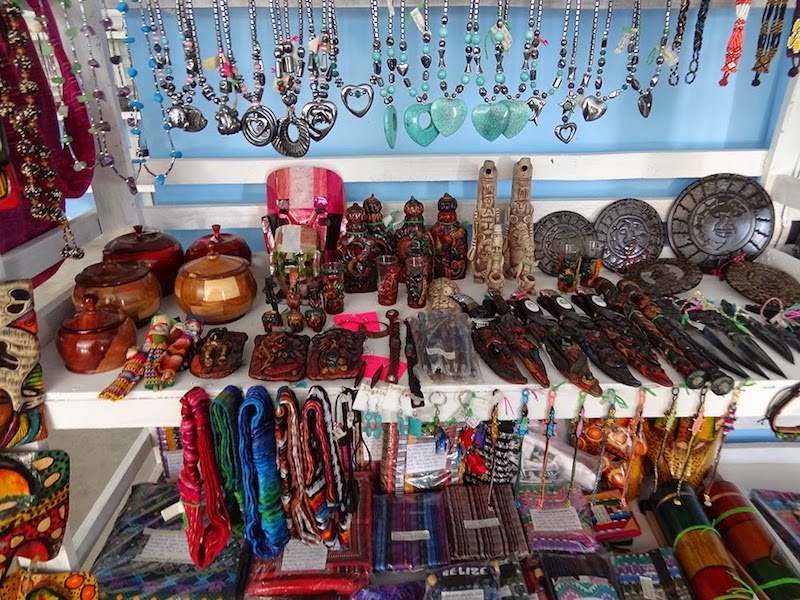
Friday, May 11th
I woke up bright and early with the plan to try out the paddle board. Well, it was like 8:00am but it felt super early. I would have made it all the way to Spain too if the paddle hadn’t been so short. Apparently kayak paddles aren’t interchangeable with paddle board paddles – I know this now. Anyway, it takes a lot of skill to use a stubby paddle while standing up so either way, it was basically as difficult as paddling to Spain.
 As I sailed back to shore with my short paddle I was accosted by two ladies in traditional dress who had been watching me from the shadows of some palm trees. After a few suspicious pleasantries they revealed their true purpose.
As I sailed back to shore with my short paddle I was accosted by two ladies in traditional dress who had been watching me from the shadows of some palm trees. After a few suspicious pleasantries they revealed their true purpose. “Ma’am, would you like to see some handmade…” shark attack.
“Sure,” I said with a shrug and readied myself for the tete-a-tete-a-tete. They probably get brushed off most of the time so I thought I might as well give them a minute and see what came of it. The ladies promptly walked over to a shady spot and dropped onto the sand, spreading out sheets of plastic for their wares to sit on.
“And you make all this?” I ask, holding up a wooden bowl which the lead lady had placed near my knee. She was younger than the grandma but obviously the leader.
“Everything is handmade. No electricity.”
“You have a lathe?” The bowl had obviously been turned on a lathe.
She nodded and went on about their industrious village which apparently had a woodworker, a stone worker, sheep herders, jewelry makers, and basket weavers besides the folks farming and selling snacks and doing non-art work.
I pointed to something that looked like a stone that had been carved into a claw shape. It hung on a cheap nylon cord.
“It’s horn of sheep” the older lady explained as she handed it to me. I took it and inspected it carefully before finally setting down the plastic horn which had a faint seam running along one side. I nodded and repeated, “sheep horn” while mentally giving them two strikes. If Google had been there, it would’ve told me that Belize didn’t have sheep until a few decades ago and even now has under 10,000 in the whole country (of the Barbados Blackbelly variety). I’m pretty certain I saw more than 10,000 of those necklaces by the time I left so their sheep must be really grumpy.
“Where do you get your turquoise?” I asked next. I had picked up a nice looking turquoise bracelet. The lead lady looked up from her plastic sheet upon which she had been arranging her wares.
“The Mayans mine it and we find it,” she explained unenthusiastically.
That would make them part of an illicit antiquities gang, I thought, and peered at the two nicely dressed ladies sitting on the sand in front of me. I thought of the plastic horn and decided against alerting the antiquities police.
“Do people still mine turquoise today?” I wanted to know because I wanted the bracelet to be real. Her English wasn’t bad but for some reason she answered by repeating what she’d already said. I nodded comprehendingly and noted the third strike. The other fake stones that we’d seen at the ladies Maya Center – fashioned as flints – the day before had looked more like jade-colored resin. And there were so many flints at every shop that I couldn’t imagine how a country the size of Massachusetts could sustain the gift shops. I’m no rock-scientist but even New Zealand imports jade from Canada for their gift shops. But jade at least had been used by Mayans. Turquoise was another matter. Later Google would teach me that Belize doesn’t mine turquoise at all. Actually, they don’t mine anything these days besides what they pave the roads with.
“How much for the bowl?” The wood, mahogany and something I don’t recall, was pretty – and real – though it wasn’t quite worth…
“25 USD”
“A carved coconut shell?” I inquired next. The outsides had animal carvings.
“20 USD”
I held up the bracelet.
“20 USD”
“What do most people do for work here?” I asked, setting down the items and leaning back.
“Construction or selling things… this bowl, ma’am, it’s very nice,” the lady lifted the coconut shell for my inspection a third time. Even their information was expensive.
“The Mayans drink from coconut shells. Sometimes today we still do – for special occasions.”
Sadly, even as a rich American I couldn’t justify the $20 coconut shell or the plastic sheep horn even though by not buying them it would probably mean her daughter wouldn’t be able to afford school and they wouldn’t be able to cover their bus fair home or any future bus fairs (they were from Punta Gorda down south). At least, that’s what the lady implied.
So I made a low offer, was denied, and bought a tamale from a 5 gallon bucket instead. I swear the grandma said it was $2 BZ but when I returned with only $2 BZ I was sent back with the tamale and instructions to “get me my dollar.”
The tamale was full of chicken bones mostly so I figured she probably picked it out for me. Thankfully it still tasted good. I had gotten kinda hungry from all that paddling.
*Not my pictures of souvenirs but still exact replicas of what we saw.